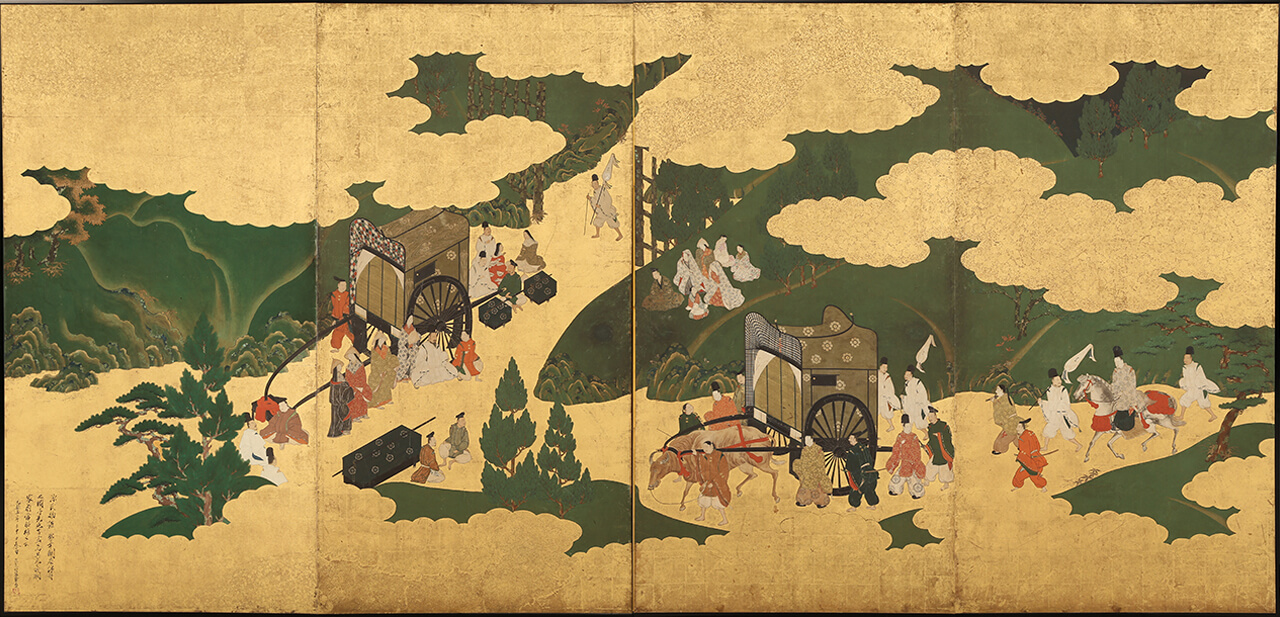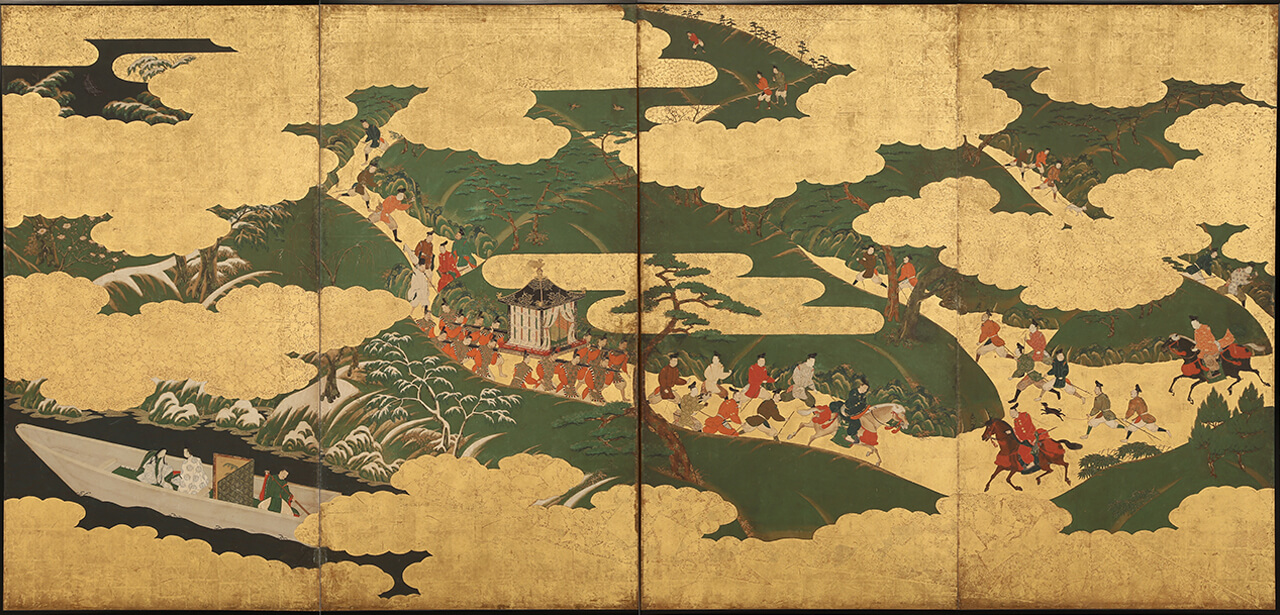Scenes from The Tale of Genji
Facsimile of a work in the collection of The Metropolitan Museum of Art:
Scenes from The Tale of Genji: "The Royal Outing," "Ukifune," and "The Gatehouse", Tosa Mitsuyoshi (Japanese, 1539–1613),
Momoyama period (1573–1615), mid-16th–early 17th century.
Pair of four-panel folding screens; ink, color, and gold leaf on paper, Image (each screen): 65 1/2 in. × 11 ft. 8 in. (166.4 × 355.6 cm),
Fletcher Fund, 1955 (55.94.1, .2) Image © The Metropolitan Museum of Art.
These images are based on the high resolution facsimile produced by the Tsuzuri Project. Unauthorized copying, duplication, or transfer of these images is strictly prohibited.
DATA
- Artist:
- Tosa Mitsuyoshi
- Historical era:
- Azuchi-Momoyama (16th Century)
- Material:
- printed, gold on washi paper
- Medium:
- pair of four-fold screens
- Theme:
- High Resolution Facsimile of Japanese Art Abroad
- Size:
- Each screen measures H166.4 × W355.6 cm
- Recipient:
- Byodoin TempleMAP
[Original]
- Current owner:
- The Metropolitan Museum of Art
- Material:
- ink, color, and gold on washi paper
DESCRIPTION
This work is assumed to be one of the few pieces undertaken by Tosa Mitsuyoshi on a large folding screen. Mitsuyoshi specialized in works depicting scenes from The Tale of Genji, the renowned masterpiece of court literature. This screen depicts scenes taken from three chapters — Sekiya and Miyuki as well as Ukifune, which is from a section of the book known as the "Ten Chapters of Uji." In the lower left of the screen on the left is a description from an appraiser in 1692. It indicates that part of this work was retouched by Mitsuoki, a grandson of Mitsuyoshi, who became known as a founder of the Tosa School. Because it indicates a connection to the Tosa School, this information adds significant value to the artwork. Notably, the Seikado Bunko Art Museum has in its collection an artwork by Tawaraya Sotatsu titled "Folding Screen of Sekiya and Miotsukushi." Designated a national treasure, this work is thought by some to have been modeled on Mitsuyoshi's screen paintings because of its similar composition and subject matter. Much interesting discussion focuses on the question of Mitsuyoshi's influence as a leading painter inspired by The Tale of Genji.


